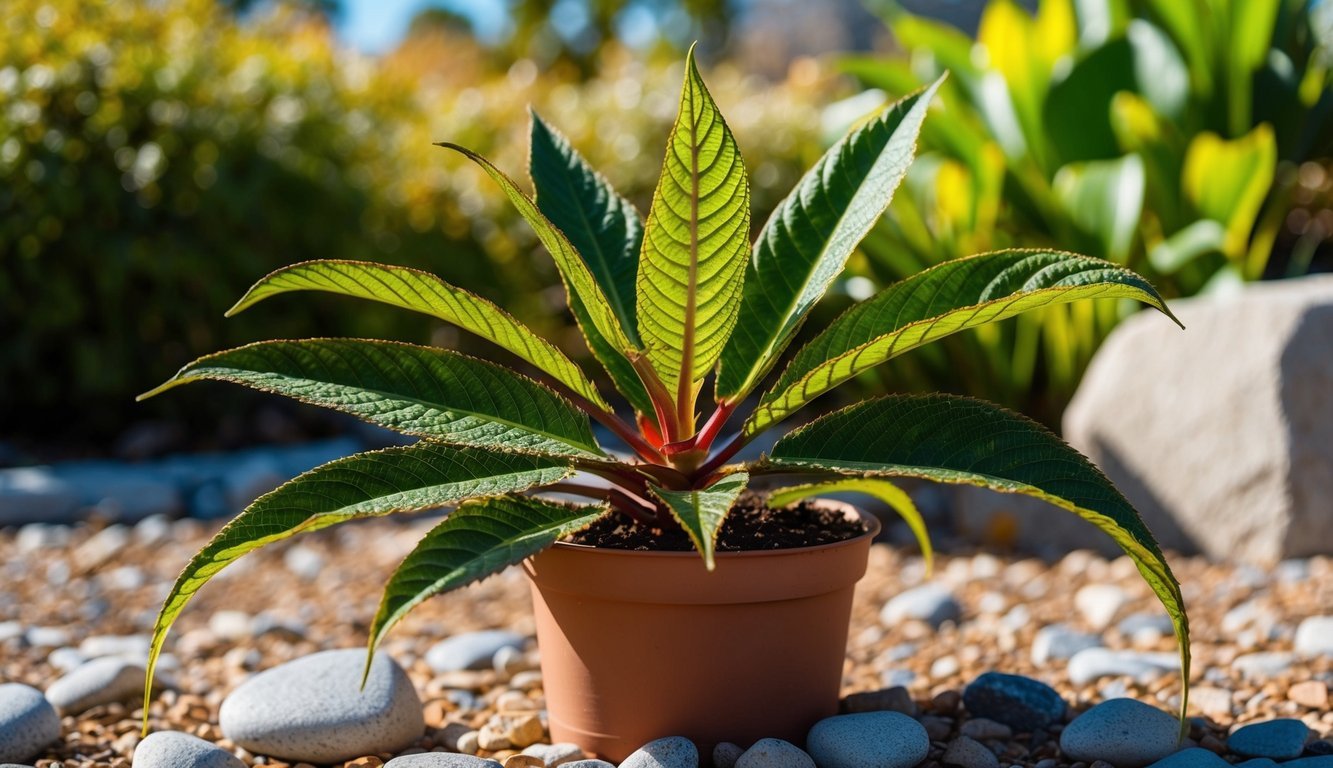
Meet the Titanopsis Jewel Plant
Meet the Titanopsis hugo-schlechteri, affectionately known as the jewel plant or living rock.
This charming evergreen succulent is especially cherished for its fascinating, gravel-like foliage.
Its leaves showcase a stunning palette of colors, from deep blue and gray to vibrant green, purple, red, and pink.
Each plant produces rosettes, measuring about two inches, adorned with thick, spoon-shaped leaves that feature a delightful texture enhanced with small and large bumps in shades ranging from white to reddish-brown.
At maturity, jewel plants typically spread four to six inches wide and grow two to four inches tall.
During winter, they surprise gardeners with blossoms, primarily in sunny yellow, though pink blooms sometimes make an appearance.
- Common Names: Jewel Plant, Living Rock
- Plant Type: Evergreen Succulent
- USDA Hardiness Zones: 8b-11b (ideal for outdoor cultivation)
- Native Regions: Namibia and South Africa
- Bloom Period: Winter
- Light Requirements: Thrives in full sun with partial shade in summer
- Optimal Soil Type: Gritty, succulent-specific mix
- Soil pH: Ranges from 6.5 to 8.5 (slightly acidic to mildly alkaline)
- Time to Maturity: Roughly 2 years
- Maximum Size: 4-6 inches in width, 2 inches in height
- Best Uses: Perfect for indoor gardens and xeriscaping
Creating the Ideal Growth Environment
For your jewel plant to flourish, it demands a well-draining soil mixture.
Aim for a blend that consists of around 85% minerals and only 15% organic matter, with a pH between 6.5 and 8.5.
Exceptional ingredients include pumice, coarse sand, lava gravel, and limestone gravel, all of which promote healthy growth.
Provide this succulent with six to eight hours of direct sunlight daily for optimum health.
If you’re growing it indoors, place it by a bright, south-facing window or under grow lights.
In the summer months, a little shade can help protect it from intense heat.
Allow the soil to dry out thoroughly between watering sessions because these plants are adapted to habitats with excellent drainage and limited moisture.
Younger plants typically need more water, while established specimens should receive less frequent water, especially during their summer dormancy.
Propagation Methods
You can propagate living rocks through seeds or offsets.
For seed propagation, fill pots with a suitable growing medium and cap them with coarse sand during the spring.
For offsets, gently separate them from the main plant, let them develop a callus for a few days, and then transplant them into fresh soil.
With the right care, Titanopsis jewel plants can thrive beautifully indoors and outdoors, enhancing any plant collection with their unique charm.
By ensuring they receive adequate sunlight, well-draining soil, and attentive watering practices, you’ll support their growth and enjoy their stunning presence for years to come.
Source: Gardenerspath.com

